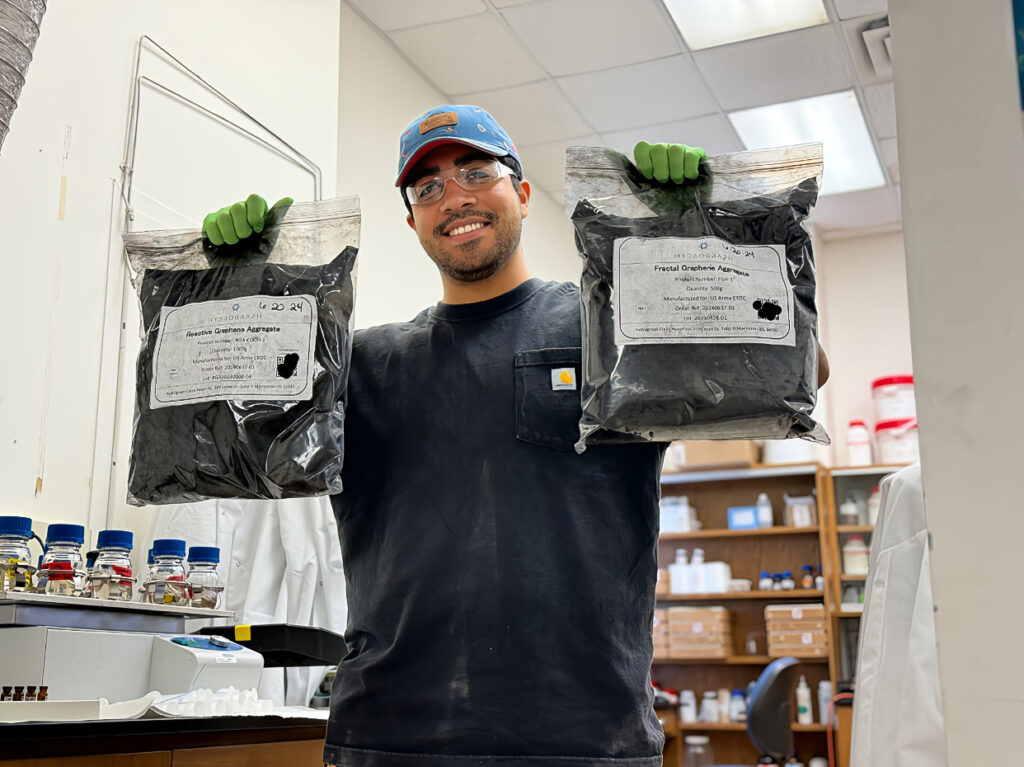
UWA’s partnership with the U.S. Army Engineer Research and Development Center gives Colato-Martinez opportunity of a lifetime
Story: Lisa Sollie
A new partnership between the University of West Alabama’s College of Natural Sciences & Mathematics (NSM) and the United States Army Engineer Research and Development Center (ERDC) provided UWA student Christian Colato-Martinez, from Las Vegas, Nevada, with an internship opportunity of a lifetime.
Colato-Martinez, whose parents immigrated to the United States in 1989, admits he was initially nervous about the internship. “When I first learned about the possibility, I was unsure. I’m just an average student without a perfect resume or qualifications. If you had told me a few years ago that I’d be spending my summer at a military base and involved in global-impact research, I wouldn’t have believed it,” he said.
At the ERDC, Colato-Martinez worked under research chemist Sarah Grace Zetterholm in the environmental engineering lab. There he conducted kinetic and isotherm experiments on graphene, a 2D form of carbon discovered in 2004. The ERDC researchers aim to explore graphene’s potential in water treatment—a development that could revolutionize how we address water purification challenges.
A highlight of Colato-Martinez’s internship was presenting his work to U.S. Senator Roger Wicker during his visit to the ERDC. In a brief pitch, Colato-Martinez explained how researchers are studying how graphene adsorbs common pollutants— like pharmaceuticals, personal care products and dyes— from water. Graphene’s effectiveness in water filtration could potentially surpass the current gold standard, granulated activated carbon (GAC), offering significant benefits for both military and civilian applications.
Senator Wicker, a strong advocate for graphene production and research, has said the next generation material has shown versatility and potential to stimulate technological advancement in many industries.
Dr. Wayne Korzan, associate professor of Biology at UWA and Colato-Martinez’s advisor, praised his student’s achievements. “Christian’s internship supervisor was very impressed with his work ethic and his vigilant approach to his laboratory experiments,” Dr. Korzan noted. He added that while he was pleased but not surprised by Colato-Martinez’s performance, he always knew the student would excel. “He may have been the first UWA student selected for an internship through our new partnership with ERDC, but he won’t be the last,” Korzan said.
Despite the difference between his current studies in cellular and molecular biology at UWA and this internship field, Colato-Martinez found the experience invaluable. “It was a wonderful experience,” he said. “The ERDC team welcomed me despite my background not being in chemistry or engineering. They were willing to teach me, and I’m eager to return to the facility after school ends in December.”
Colato-Martinez’s ultimate goal is to attend medical school, no matter how long it takes. To save money for this, he used the funds from his internship to pay for EMT courses through the Alabama Fire College. He’s also been invited to return to the ERDC next summer. “I’m working hard to reduce my student loans,” he explained. “By next summer, I hope to have enough savings to move across the country, work as an EMT, and use my experience at the ERDC to strengthen my medical school applications.”
Headquartered in Vicksburg, Mississippi the ERDC operates seven unique laboratories in four states that help solve the nation’s most challenging problems in civil and military engineering, geospatial sciences, water resources, and environmental sciences. As one of the most diverse engineering and scientific research organizations in the world with an annual research program exceeding $1 billion, ERDC scientists, engineers, technicians, and administrative and support personnel develop far-reaching technologies and innovative solutions in support of the Soldiers, military installations, and the Corps of Engineers’ civil works mission, as well as for other federal agencies, state and municipal authorities, and with U.S. industries through innovative work agreements.